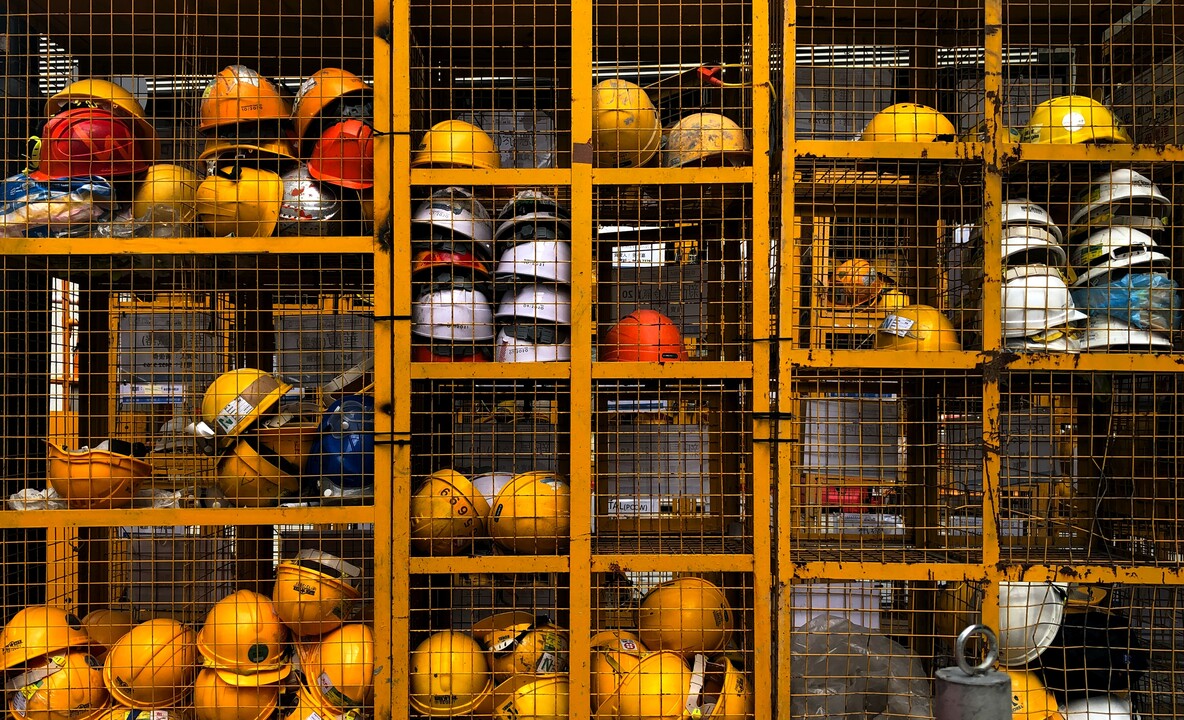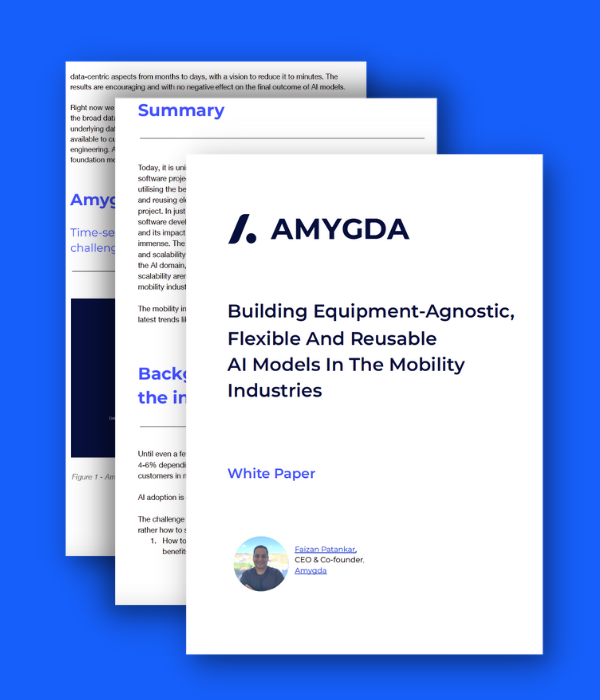The Original Equipment Manufacturers (OEMs) establish a recommended plan for maintenance and part replacement, for the duration of an equipment’s lifetime.
The Original Equipment Manufacturer (OEM) establishes a recommended plan for maintenance and part replacement. However, OEMs don’t know the specific conditions that your equipment operates under. OEMs also have their own needs to meet and business agendas to advance. In other words, OEMs are not looking out for you – they are in business to sell parts!
If you don’t believe me, go check any OEM’s annual statements and investor updates, you will notice how the share price is tied to selling more units, and more parts. They do not optimise for increasing reliability and availability of existing equipment their customers have.
If you don’t believe me, go check any OEM’s annual statements and investor updates, you will notice how the share price is tied to selling more units, and more parts. They do not optimise for increasing reliability and availability of existing equipment their customers have.
If you follow their maintenance recommendations, you will end up replacing many components long before they ever need replacing – and that means wasting money. And folks in the industry know this. The reason this behaviour has gone unchecked is that things have always been done this way for the past 100 years.
In fact, many times conditions or applications dictate a complete change in the OEM’s maintenance schedule. However, if you try to improve your maintenance regime by customising it for your needs, you as a customer will be threatened with a loss of warranty on your equipment. A tactic employed to make you fearful of navigating away from the OEM maintenance regime.
At Amygda, we don’t work for the OEMs, our goal is to optimise your maintenance plan according to your unique needs. In fact, you can have Amygda’s system back up your claims on things like, are the equipment uptime SLAs being met, are due penalty payments (most enterprises are, they just don’t have a way to track equipment performance and auto-create performance reports).
The OEMs directed performance is based on the design data that was used to develop the product.
Many people assume that the OEMs have taken all the circumstances of your environment and equipment operation into account when they specify the maintenance intervals. Not true! The OEM directed maintenance is based on the design data that was used to develop the product, in some instances 10 to 15 years ago.
However, you may be working with:
- Older or newer equipment and different OEMs have different maintenance regimes for exactly the same equipment (crazy much?)
- Equipment in a different application, OEMs design for the idealist way a customer should apply a product, no one does
- Corrosive environments, if we agree that the environment has changed over the past 20 years, which part of maintenance should stay the same as designed 20 years ago?
All these conditions affect how often you should perform maintenance. However, have you ever received a new maintenance manual for your machine? Has an OEM mandated maintenance regime ever changed?
No.
Because if you do over-maintenance, OEMs cover their backs, and they don’t optimise for your reliability or uptime.
The “actual” performance of the product may vary from the OEM recommended maintenance needs.
The “actual” performance of the product may vary and always varies from the OEM recommended maintenance needs. This is based on the condition of the product, application of the product and environment that which the product is used in. It also depends on the specific skill sets of your operators. All these elements come into play when considering how often you should perform certain maintenance tasks.
“Actual” performance can be measured by measuring the actual wear rate or life consumed of a component that is being replaced.
From a maintenance point of view, actual performance can be measured by measuring the actual wear rate or life consumed of a component that is being replaced. This can be done by either measuring the actual failure rate (the number of failures observed in a given period) or by using a prognostic algorithm to estimate the wear rate or life consumed based on the equipment condition data.
The actual wear rate can then be used to evaluate the performance of the system and to adjust the maintenance schedule for future actions. In this way, one can determine whether or not OEM mandated maintenance recommendations should continue to be used for particular systems and for any specific operating conditions.
Measuring “actual” failure rates will allow you to determine if you are over or under maintaining your equipment.
Imagine how much money you could save on maintenance if only you could measure the actual wear rate of the components in your equipment. Then, using this measurement as a baseline, you can develop your own maintenance schedule that is based on actual usage and wear rates.
This will allow you to maintain your equipment based on its actual performance rather than relying on OEM recommendations that are typically measured in time or miles travelled. If a component is wearing out faster than expected, then make adjustments to your maintenance schedule accordingly.
If it has not worn out at all when the existing maintenance schedule calls for its replacement, then keep it until the next scheduled replacement time. I know some of you are thinking from a regulatory point of view, and in industries like aviation that we operate in, regulatory or mandatory checks are important. However, I believe it is time to show with accurate information checks can be managed and the interval between them increased backed by evidence of data.
And frankly, no one is saying no checks should be done. What we are calling for is that those who operate the equipment, are closest to it, and are liable for the safety, are the ones who are trusted to build their own maintenance regimes, backed by good practice and evidence of data.
OEMs aren’t the closest to equipment operation. The customers, i.e. operators of those assets, are.
By measuring the actual wear rate, you can develop maintenance recommendations that improve the safety, reliability, and economy of your own operation.
To get a true picture of your maintenance requirements, you need to measure the actual wear rate of your equipment.
Unfortunately, this is not as simple of a task as it may sound. If you simply check the oil level at every PM and record how much oil has been added, that is somewhat telling. But what if you had to add more oil than usual because the engine was running hot or because someone had forgotten to check it for a long time? What if you checked the air filter and found it was extremely dirty but no one knows how long that condition existed? What if none of these situations occurred but your equipment just happened to be running below average duty cycles?
All these situations can affect the apparent wear rate of your machine; therefore, they must be accounted for in order to accurately predict your equipment’s future maintenance needs. This can be done by measuring several factors related to engine health over time and then comparing them against each other, such as:
Developing your own maintenance recommendations allows you to manage each piece of equipment as an asset instead of a liability.
As an Asset Manager or Engineering manager, you know that equipment is an asset when it’s working properly and a liability when it isn’t. The cost of maintaining the balance between assets and liabilities is your maintenance budget.
Do you manage each piece of equipment as an asset or a liability?
Assets are expensive to purchase, but they are also generating revenue while they are operating. Liabilities can be inexpensive to acquire, but if they aren’t working properly, then you will be spending money on them with no financial return for the business. It may seem easier to manage all assets this way, but not all assets are created equal (and neither are liabilities), so managing each piece of equipment as an asset or liability doesn’t make sense for most pieces of equipment whose lifespan is less than 20 years. That leaves the majority of your fleet with some maintenance costs that can vary greatly depending on how well-maintained the asset was before coming into operation and how well maintained it currently is.
When developing your own maintenance recommendations, remember that these costs include any investment made in maintaining each piece of equipment over its lifetime including labour; parts; supplies; repairs; and energy consumption which will change depending on usage patterns.
You do not need to adhere to the OEM mandated maintenance schedule if it does not make sense for you.
If you have a large number of assets, and especially if they are in a harsh environment or your operations are 24/7, it is very likely that the OEM mandated maintenance schedule will not make sense for you.
Here’s a true, but unpopular opinion.
The OEM mandated maintenance schedule is based on what the manufacturer thinks will minimise warranty claims. It is designed to protect the manufacturer from liability, not to maximise uptime and reliability. OEMs in general will err on the side of more frequent service; however, service can be performed based on actual wear rate rather than just following an OEM mandated plan.
By performing predictive maintenance (PdM) instead of following an OEM mandated schedule, you can:
- Increase safety and reliability (and reduce costs associated with downtime).
- Extend the life of critical components and save money.
- Increase productivity by reducing unplanned downtime.
- Reduce the risk of unexpected warranty claims by ensuring your equipment is always running as intended.
Change is coming, business models are changing
Technological breakthroughs in data science haven’t convinced customers to pay attention to the art of the possible. And that’s mostly down to OEM marketing myths and warranty lock-ins.
We are already noticing more customers wanting to bring maintenance in-house or become independent of the OEM.
On the warranty side, we are starting to engage in innovative ways of supporting our customers in being independent of the OEM. A warranty is not the same as a guarantee.
And warranties aren’t free either. A premium is baked into the price of the equipment to offer you a warranty. It’s a financial product, not an engineering one.
At Amygda we are focussing on enabling servitization (for lessors and OEMs who would like to increase availability) which means we are getting really good at understanding the performance of the equipment and observing anomalies across your whole fleet, rather than making things OEM specific. And as a customer that means we are optimising your maintenance schedules, not beholding you to what your OEM says.
Of course, it does mean that customers now need to hold engineering principles higher than just following marketing myths. However, we believe that change is happening.
Follow Amygda on LinkedIn.
Credits
Cover photo by Pop & Zebra on Unsplash





